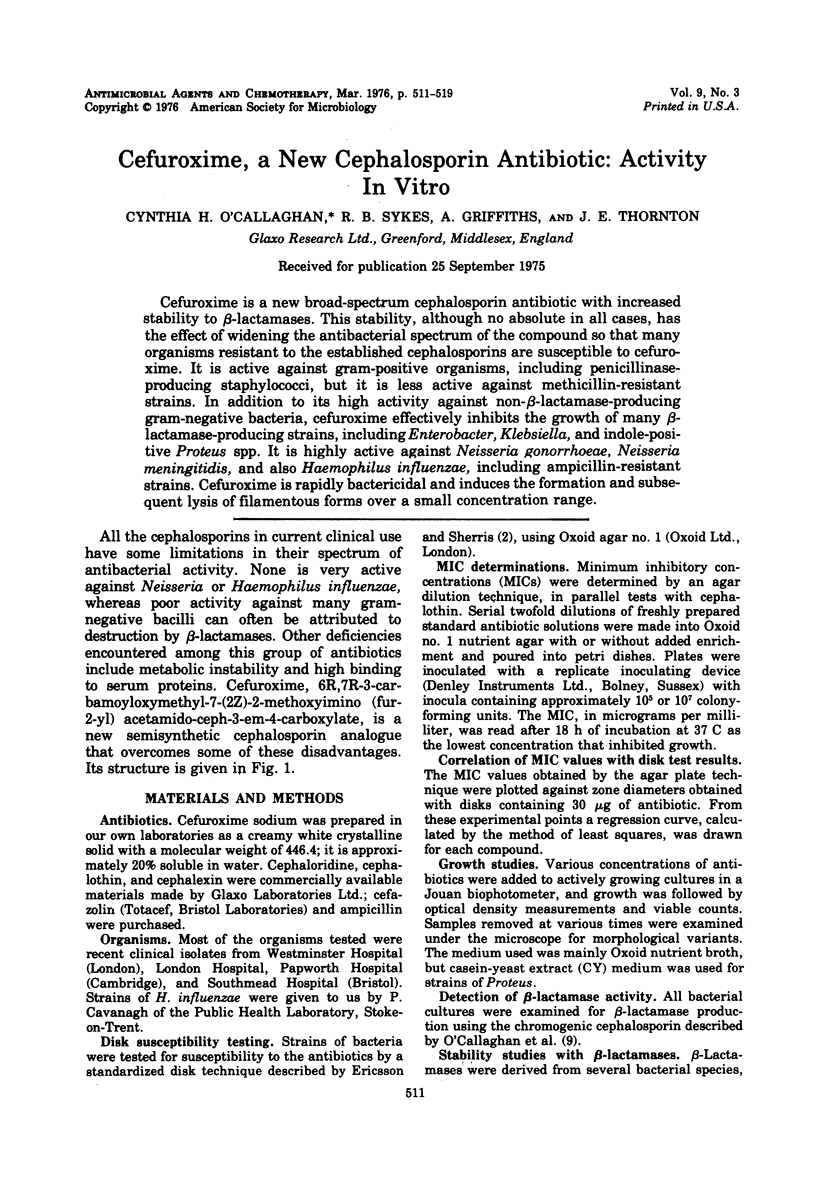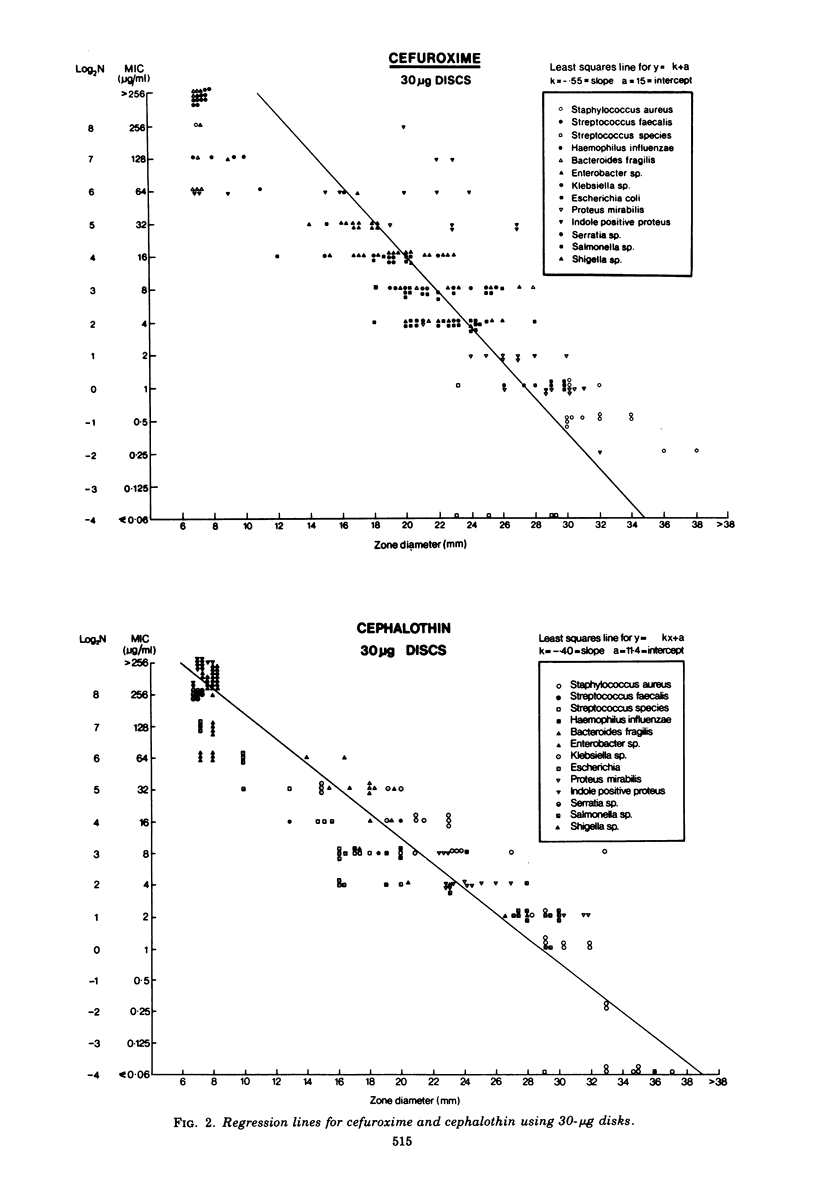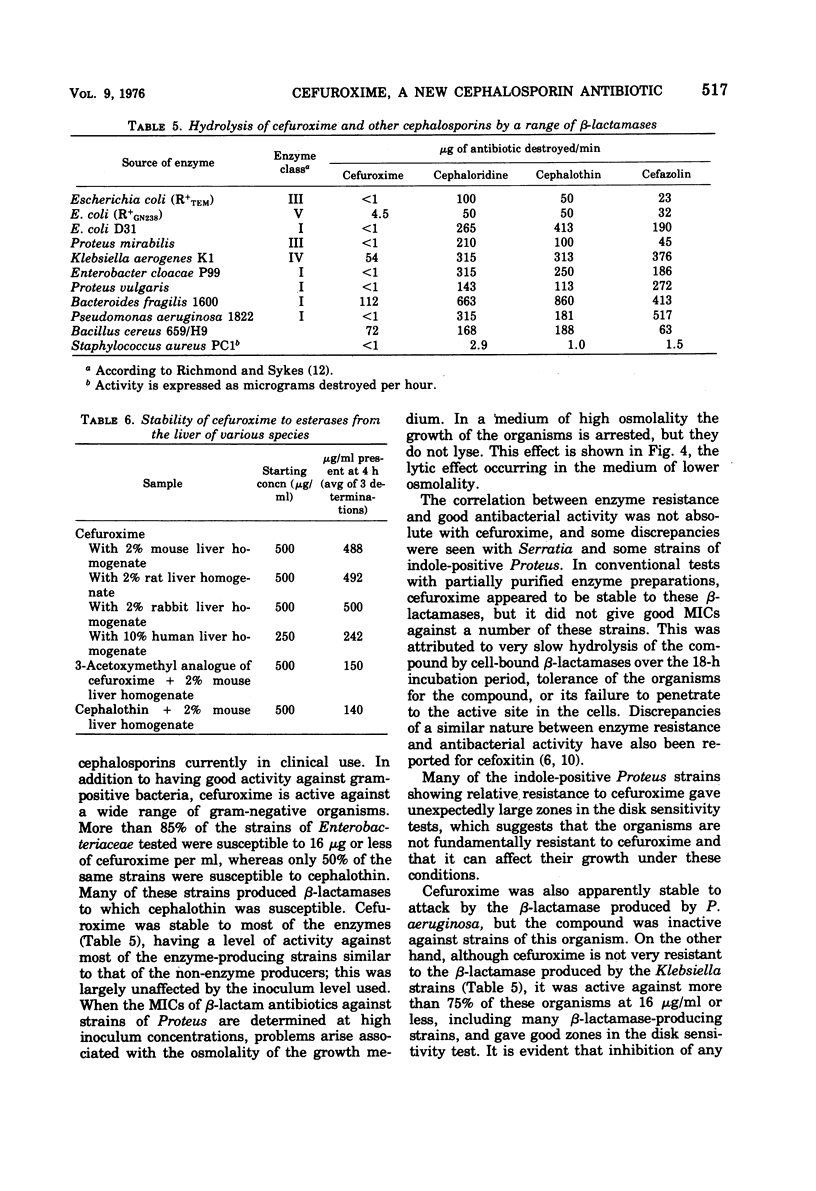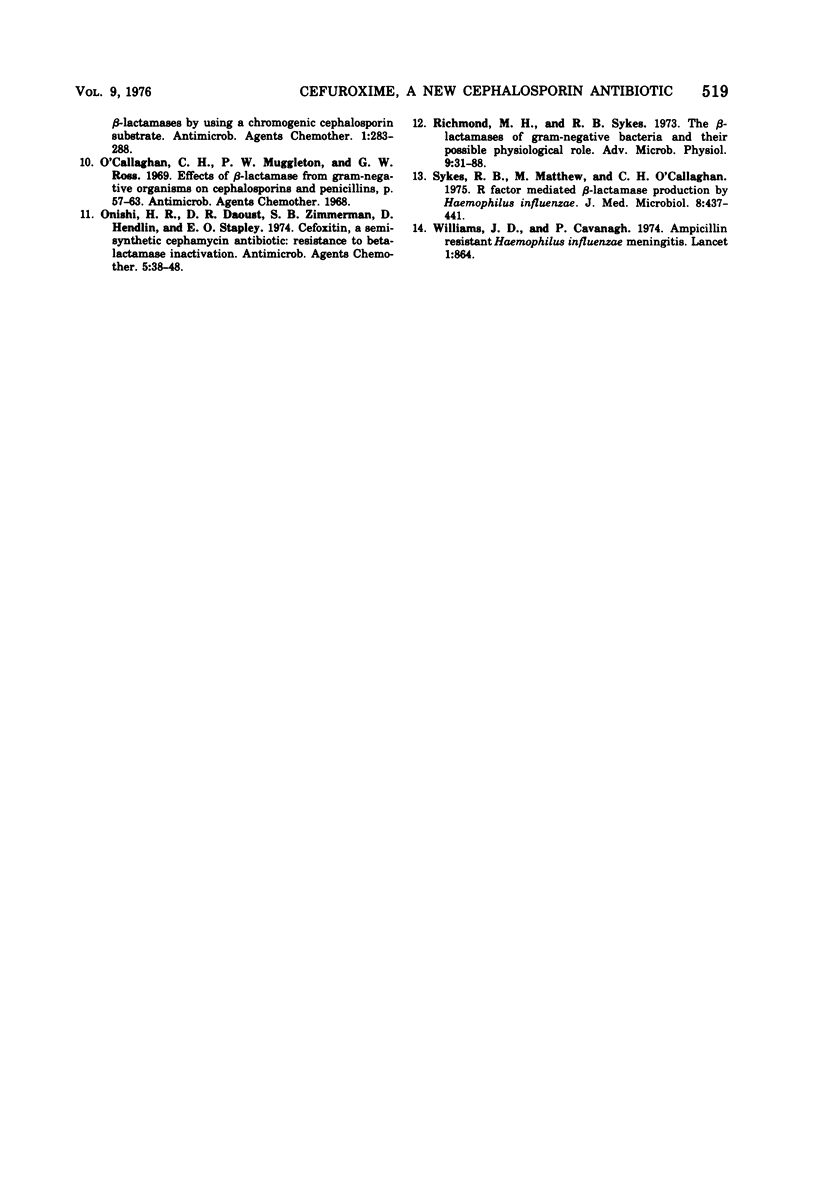Abstract
Cefuroxime is a new broad-spectrum cephalosporin antibiotic with increased stability to β-lactamases. This stability, although no absolute in all cases, has the effect of widening the antibacterial spectrum of the compound so that many organisms resistant to the established cephalosporins are susceptible to cefuroxime. It is active against gram-positive organisms, including penicillinase-producing staphylococci, but it is less active against methicillin-resistant strains. In addition to its high activity against non-β-lactamase-producing gram-negative bacteria, cefuroxime effectively inhibits the growth of many β-lactamase-producing strains, including Enterobacter, Klebsiella, and indole-positive Proteus spp. It is highly active against Neisseria gonorrhoeae, Neisseria meningitidis, and also Haemophilus influenzae, including ampicillin-resistant strains. Cefuroxime is rapidly bactericidal and induces the formation and subsequent lysis of filamentous forms over a small concentration range.
Full text
PDF








Selected References
These references are in PubMed. This may not be the complete list of references from this article.
- Anderson J. D., Sykes R. B. Characterisation of a -lactamase obtained from a strain of Bacteroides fragilis resistant to -lactam antibiotics. J Med Microbiol. 1973 May;6(2):201–206. doi: 10.1099/00222615-6-2-201. [DOI] [PubMed] [Google Scholar]
- Eykyn S., Jenkins C., King A., Phillips I. Antibacterial activity of cefamandole, a new cephalosporin antibiotic, compared with that of cephaloridine, cephalothin, and cephalexin. Antimicrob Agents Chemother. 1973 Jun;3(6):657–661. doi: 10.1128/aac.3.6.657. [DOI] [PMC free article] [PubMed] [Google Scholar]
- Greenwood D., O'Grady F. The effect of osmolality on the response of Escherichia coli and Proteus mirabilis to penicillins. Br J Exp Pathol. 1972 Oct;53(5):457–464. [PMC free article] [PubMed] [Google Scholar]
- Khan W., Ross S., Rodriguez W., Controni G., Saz A. K. Haemophilus influenzae type B resistant to ampicillin. A report of two cases. JAMA. 1974 Jul 15;229(3):298–301. [PubMed] [Google Scholar]
- Kuwabara S., Adams E. P., Abraham E. P. The composition of beta-lactamase I and beta-lactamase II from Bacillus cereus 569-H. Biochem J. 1970 Jul;118(3):475–480. doi: 10.1042/bj1180475. [DOI] [PMC free article] [PubMed] [Google Scholar]
- Neu H. C. Cefoxitin, a semisynthetic cephamycin antibiotic: antibacterial spectrum and resistance to hydrolysis by gram-negative beta-lactamases. Antimicrob Agents Chemother. 1974 Aug;6(2):170–176. doi: 10.1128/aac.6.2.170. [DOI] [PMC free article] [PubMed] [Google Scholar]
- O'Callaghan C. H., Morris A., Kirby S. M., Shingler A. H. Novel method for detection of beta-lactamases by using a chromogenic cephalosporin substrate. Antimicrob Agents Chemother. 1972 Apr;1(4):283–288. doi: 10.1128/aac.1.4.283. [DOI] [PMC free article] [PubMed] [Google Scholar]
- Onishi H. R., Daoust D. R., Zimmerman S. B., Hendlin D., Stapley E. O. Cefoxitin, a semisynthetic cephamycin antibiotic: resistance to beta-lactamase inactivation. Antimicrob Agents Chemother. 1974 Jan;5(1):38–48. doi: 10.1128/aac.5.1.38. [DOI] [PMC free article] [PubMed] [Google Scholar]
- Richmond M. H., Sykes R. B. The beta-lactamases of gram-negative bacteria and their possible physiological role. Adv Microb Physiol. 1973;9:31–88. doi: 10.1016/s0065-2911(08)60376-8. [DOI] [PubMed] [Google Scholar]
- Sykes R. B., Matthew M., O'Callaghan C. H. R-factor mediated beta-lactamase production by Haemophilus influenzae. J Med Microbiol. 1975 Aug;8(3):437–441. doi: 10.1099/00222615-8-3-437. [DOI] [PubMed] [Google Scholar]
- Williams J. D., Cavanagh P. Letter: Ampicillin-resistant Haemophilus influenzae meningitis. Lancet. 1974 May 4;1(7862):864–864. doi: 10.1016/s0140-6736(74)90508-x. [DOI] [PubMed] [Google Scholar]


